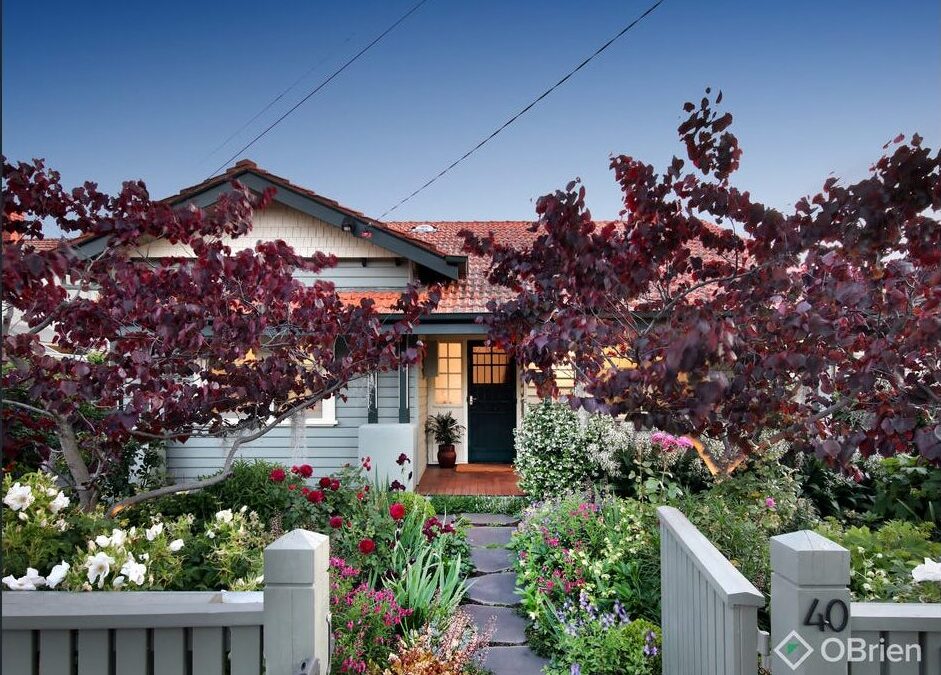Photo Credit – Obrien Real Estate Oakleigh
Creating a Low Maintenance Garden
If you’re like many of my clients, you’re probably seeking a low-maintenance garden. But what does that mean exactly? It can be confusing since everyone has their own interpretation. Today, I’m sharing insights from my own experience with various types of gardens, providing examples of what makes a garden low-maintenance and what doesn’t. So, let’s dig in!
1. Decks and Borders:
A low-maintenance garden often includes a deck or paved entertaining area surrounded by a simple border of plants and turf. But be careful! Plants like Pittosporum, are often used as screening hedges however can grow out of control if not regularly maintained. Removal or trimming will be essential for keeping the garden neat and low-maintenance.
2. Looks can be deceiving – Plant Density:
Whilst this garden may appear to be high maintenance, I would argue that it is the best type of garden to have. Why? A garden densely planted with hardy species requires less upkeep than a sparsely planted one where weeds can easily take over. For instance, a well-established garden with fewer exposed soil patches will prevent weeds from popping up, reducing overall maintenance.
This is a home we inspected for a client in Hughesdale. Offered by Jellis Craig in Carnegie. You can view the fill listing here – 13 Callander Street, Hughesdale
3. Rocks and Pebbles Pitfalls:
While rocks and pebbles are visually appealing, they tend to trap leaves, making them tricky to clean. Birds can scatter them around, and lawnmowers can flick them into windows. They may seem like a low-maintenance solution but often end up being high-maintenance in the long run.

When freshly laid ready for sale these pathways look great and give the illusion of a low maintenance area. However these paths can become filled with weeds and look unsightly over time.
4. Hedges and Screening Plants:
Know your hedging plants! Some varieties grow slower and require less pruning, while others, like Pittosporum, quickly become unruly if not pruned regularly. Understanding your plants will help you plan maintenance accordingly.

Famously known as the “neighbour-be-gone-tree”these plants turn into giants in a blink of an eye. Here is an example of a mature Pittosporum hedge
5. Problematic Trees:
Large trees can be beautiful but must be trimmed regularly to prevent them from overhanging roofs and causing gutter clogs, rust, or leaks. Stay on top of your tree maintenance to save thousands on gutter repairs down the line.
Conclusion:
Ultimately, finding a home with a low-maintenance garden requires understanding what makes a garden truly low-maintenance, as appearances can be deceiving. When searching for your next home, keep these tips in mind: plan to remove trees, hedges, and plants that could become problematic over time; plant densely to prevent weeds; and focus on selecting hardy, low-maintenance plants and materials for your garden. Doing so will help you create an outdoor space that remains beautiful and easy to care for.

The stunning home in the banner image was a beautiful home we had the pleasure of inspecting for a client recently and can be viewed HERE



Recent Comments